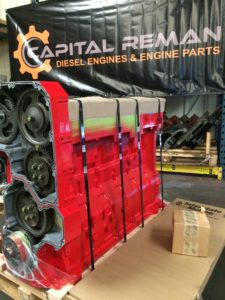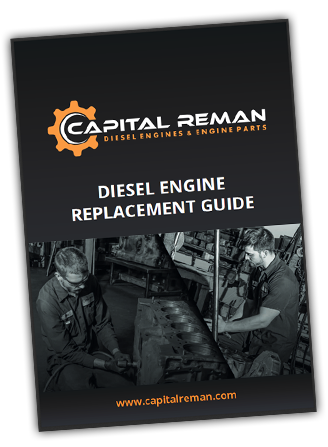When to Replace a Piece of Equipment
 When to Replace a Machine?
When to Replace a Machine?
For fleet managers one of the toughest parts of the job is when to rebuild or "put out to pasture" an aging piece of equipment. More often than not those decision are based upon instinct and not grounded by hard analytics. This article will shed some light on the five options feet managers can make when evaluating older pieces of equipment.
Purchasing a fleet of work trucks or excavators is only half of the battle. More often than not, the heavy equipment needed to do the job, is the biggest capital expense of an industrial service company. Agriculture, Transportation, Construction, Road Maintenance, Mining, Oil and Gas and Marine industries all rely on their fleets to produce sustainable revenue. The life span of each piece of equipment should be factored into not only the initial cost but variable costs of running the equipment. When a fleet manager is evaluating what to do with an aging piece of equipment they need to adequately understand their options, factor in initial and future costs, analyze the resale and depreciation of the equipment and how to improve efficiency when they can. It is not a decision to be made lightly.
The first step a fleet manager needs to take is identify the pieces of equipment in their operation and make an honest assessment of condition. Areas of study for an existing piece of equipment include: initial product cost, fuel efficiency vs. newer models, maintenance frequency and costs, decreasing reliability and downtime, re-sell value and lack of ongoing utilization within the fleet. The decision to replace a piece of equipment usually consists of more than one factor other than age of service. A good fleet manager should keep an ongoing list of suitable candidates for replacement and factor in doing a few units per year given the company’s budget. Along the same line the fleet manager should also factor in multiple vehicles that will unexpectedly be broken beyond repair. Failure to plan for unexpected repairs or having to replace a unit entirely can cost a company untold amounts of money in downtime and expedited replacement.
We have identified five suitable options for fleet managers to replace older equipment: Hold, Scrap/Sell, Continued Use & Repair or Partial Rebuild, Remanufactured Like for Like Swap and Full Replacement.
 Option #1 Hold on to the Machine
Option #1 Hold on to the Machine
The first option is to hold onto the piece of equipment. After a complete evaluation the fleet manager decides to hold on to the piece of equipment and continue to on as is. More often a piece of equipment in a holding pattern has finished up a very specific job and is sitting idle awaiting another task. The small repairs are not costly and the equipment still produces tangible revenue for the company. It should be noted that a piece of idle equipment can deteriorate quickly and continues to depreciate in value.
Option #2 Scrap or Sell the Machine
The second option for the company is to sell or scrap the piece of equipment. Older equipment can either be sold for scrap, parted out or sold at auction to recoup some of its value. Pieces of equipment that all into this category are beyond their useful age.
Option #3 Run and Repair as Needed
The third option for fleet managers is to continue to run and repair as needed. This option should be considered the fall back option if all other options have been exhausted. The inclination is to push a piece of equipment to its useable max however this mentality can backfire on a company. All it takes is for that asset to fail unexpectedly one day without any fallback option. Run and  Repair as needed should only be used if the company has an alternative option in-case the machine fails mid project. Trying to extend the life of a machine should be analyzed and calculated vs. replacing the piece of equipment. Upfront costs, performance and future salvage value should be considered in this decision. Sometimes short gap solutions are perfect to get a company through a season before full replacement can take place.
Repair as needed should only be used if the company has an alternative option in-case the machine fails mid project. Trying to extend the life of a machine should be analyzed and calculated vs. replacing the piece of equipment. Upfront costs, performance and future salvage value should be considered in this decision. Sometimes short gap solutions are perfect to get a company through a season before full replacement can take place.
When all else fails and the machine needs immediate attention the Partial Rebuild and/or remanufactured options are the best possible solution before out all buying a brand new piece of equipment. It should be noted that “rebuilding” and “refurbishing” are not the same as “remanufacturing”. A rebuild of an engine or piece of equipment usually include replacing ancillary wear parts to extend the life of the equipment. In an excavator that might include replacing the bucket, teeth or tracks. In a diesel engine a rebuild might include replacing the bearings, gaskets, turbo and injectors. Rebuilding is the more cost effective option to get additional life out of the equipment but the core mechanical components are still subject to wear and catastrophic failure. Rebuilding is a good option if the piece of equipment is slated to last a few more seasons but is scheduled to be replaced in the near future. For example rebuilding a 25 year old engine multiple times with just an inframe or overhaul kit will not prevent spun crankshaft bearings, dropped valves, cracked cylinder heads or a rod through the engine block.
Option #4 Remanufacture the Machine
Consequently, remanufacturing is the best possible option before a true replacement. Remanufacturing is returning a piece of equipment to “like new” status. A true reman process will machine the piece of equipment back to OEM spec. In diesel engines this means grinding, polishing, decking and welding all of the hard parts back to their original factory specifications. The engine is returned to the same quality as the day it left the factory years before. Remanufacturing can also improve the quality and efficiency of the component from the original condition as technology and parts quality improved since the initial build date. Typically remanufacturing outfits will either build you a new remaned machine or they can remanufacture your unit and return it, opting for minimal or non-existent downtime. Remanufacturing can extend the life of a piece of equipment by years and save a company untold amounts of money over purchasing a new piece of equipment. On average a remanufactured machine versus a brand new unit is 68% cheaper than going to the dealer. Cummins ISX Longblock Dual Cam
Cummins ISX Longblock Dual Cam
Option #5 Full Replacement of the Machine
A company should only consider a true replacement of a machine if all other options have been analyzed and exhausted. A fleet manager should always be focused on the present job at hand and the future needs of the equipment. If a machine cannot keep up with the volume, job site requirements, and nature of the work then the machine should be replaced. The continuation of work should be considered when analyzing a piece of equipment as well as its full economical life cycle and depreciation. Many times assets which are financed through a bank or capital equipment leasing companywill be charged more in interest over the life cycle of the machine. Financing companies are expecting the owners to trade in an older piece of equipment once the interest payments balloon over time. The financing companies make money on the sale as well as “pushing” companies to purchase new equipment which include down payments upfront. Three decisions should be considered when analyzing whether to replace a machine or do a remanufacturing of the existing unit.
- Focus only on the present value of the existing unit versus new replacement. The past doesn’t matter when weighing on these decisions. It does not matter if you just put $4,000 into a unit to replace a pump or ECM. These are sunk costs.
- Estimate the marginal operating costs of the existing remaned units vs. a replacement. Look at 2-5 years out and project the yearly costs to operate each machine, the production revenue out of each unit and project ramp ups or scale-backs. Seasonal and yearly trends should also be factored into the costs of running the machinery as well as projected inflation year over year.
- Lastly, look at the product’s life-cycle costs and threats to the machinery (outdated, obsolete or hard to find parts), limited warranties, fuel costs and overall value of the machine in relation to the company’s long-term needs.
Ideally, there is a lot of grey area when deciding to replace or reman a current piece of machinery. There are a lot of unknowns trying to predict years out. In a like-for-like comparison a replacement will win over a reman unit if the production capacity has increased which off-sets initial costs. Examples of greater productivity include (lower fuel costs, greater load or torque capacity, upgraded size and configuration, faster deliverable times or lower maintenance costs). At the end of the day a fleet manager should try their best to focus on the tasks at and while considering future costs. Ben Franklin stated it best, “An ounce of prevention is worth a pound of cure.”




